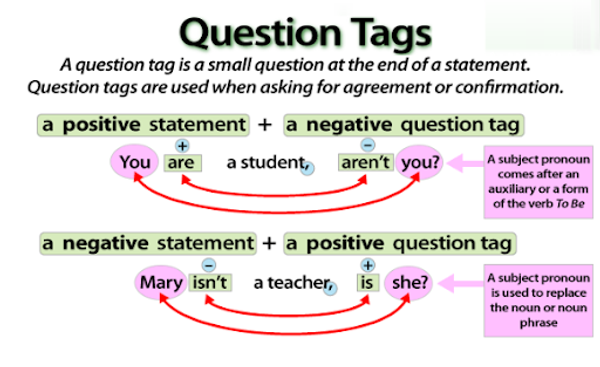Sound more natural with Question Tags
Understanding question tags is easy, isn’t it?
Question tags are very common in spoken English. They are the short questions that we add on the end of sentences, the purpose of which is to turn a statement into a question.
Why do we use them?
Usually, a question tag is added to a statement, to allow us to confirm if the information is true or not.
You are from America, aren’t you?
But they can also be used to allow you to comment on a situation.
That movie was great, wasn’t it?
Or to find out more information.
You haven’t seen my car keys, have you?
There are lots of different question tags but the rules are not difficult to learn. Here is a simple graphic to explain almost everything.

As you can see, if the main clause is positive, then the question tag is negative and vice versa.
So, to use Question Tags effectively, you need to know how to create and use both Positive and Negative sentences and when you speak, you should remember to use contractions.
It sounds easy, doesn’t it?
It sounds easy (Simple Present Positive)
It does not sound easy (Simple Present Negative)
Does not = Doesn’t (Contraction)
If you would like to learn more about Question Tags and how to use them I can recommend this YouTube tutorial:
Once you have mastered Question Tags, you might also want to learn to use Embedded Questions or Open & Closed Question forms. Asking questions is much more interesting than just learning the W? words.
Learn more Beautiful British English with Tutor Paul here on Verbling.
2019年10月30日

.jpg)



